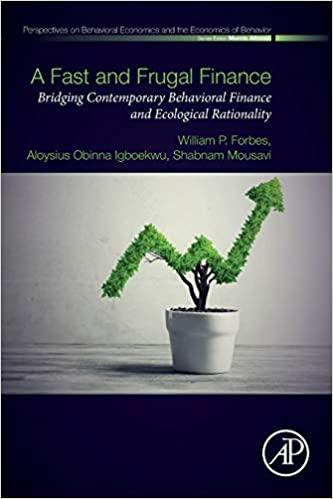Question
Suppose you face an investment decision in which you must think about cash flows in two different years. Regard these two cash flows as two
Suppose you face an investment decision in which you must think about cash flows in two different years. Regard these two cash flows as two different attributes, and let X represent the cash flow in Year 1, and Y the cash flow in Year 2. The maximum cash flow you could receive in any year is $20,000 and the minimum is $5000. You have assessed your individual utility functions for X and Y, and have fitted exponential utility functions to them:
Ux(x) = 1.05-2.86e-x/5000
Uy(y) = 1.29-2.12e^-y/10,000
Furthermore, you have decided that utility independence holds, and so these individual utility functions for each cash flow are appropriate regardless of the amount of the other cash flow. You also have made the following assessments: You would be indifferent between a sure outcome of $7500 each year for two years and a risky investment with a 50% chance at $20,000 each year, and a 50% chance at $5000 each year. You would be indifferent between getting (1) $18,000 the first year and $5000 the second, and (2) getting $5000 the first year and $20,000 the second. a. Use these assessments to find the scaling constants kx and ky. What does the value of (1 - kx - ky) imply about the cash flows of the different periods? b. Use this utility function to choose between the following two alternatives: Alternative A: Pays either $10,000 for each of two years or $100 for those two years (50% chance of either occurring). Alternative B: Pays $10,000 either in the first or second year, and $100 in the other year (50% chance of either occurring).
Step by Step Solution
There are 3 Steps involved in it
Step: 1

Get Instant Access to Expert-Tailored Solutions
See step-by-step solutions with expert insights and AI powered tools for academic success
Step: 2

Step: 3

Ace Your Homework with AI
Get the answers you need in no time with our AI-driven, step-by-step assistance
Get Started


